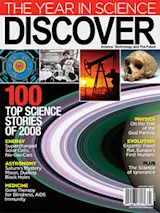The Large Hadron Collider (LHC) got off to a famously troubled start last year as an electrical failure hobbled its launch. But a reboot is scheduled for this summer, and once the kinks are worked out, the LHC will finally earn the title of the world’s most powerful accelerator. Seven times more energetic than its predecessor, Fermilab’s Tevatron, this synchrotron will peer back in time to conditions that existed a billionth of a second after the Big Bang. With the LHC’s ascendancy also comes a seismic shift in the pecking order of particle physics as once-great colliders suddenly become also-rans.
Tevatron, for one, refuses to pass quietly into obsolescence. Last fall scientists posted a description of a surprising anomaly in Tevatron data indicating that muons detected in their experiments appear to be descended from particles that cannot be explained by the standard model or by known background noise. Either an ...















